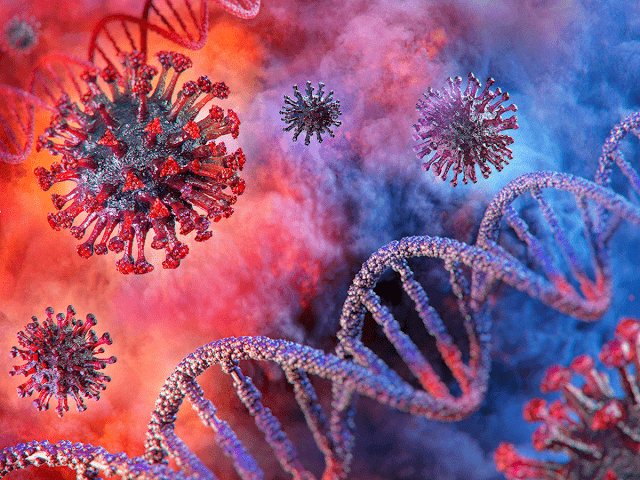1) All busy life assumed a static state
All activities came to a standstill-
All transactions nil—no receipts and no
bills;
All confined to their homes--no sports, no debates;
The busy roads turned silent,
still and bare
Creating rumors,
wide-spread panic and scare.
2)
All trade and business suffered huge loss
All stocks and shares sank
down; no jobs, no pay;
No parties, no functions—none
allowed to pass;
Industries ground to a halt
and no supplies;
All systems thrown out of
order in a trice.
3) All hospitals filled to the brim—an ordeal worse
An acute shortage of
sanitizers and masks
Dearth of vital drugs—a
difficult task;
Prices flew sky-high beyond
common man’s purse
The people abroad could not to
their countries return
Facing so many tests and
waiting for their turn.
4) A small insignificant microbial speck
Shook the whole world with
rapid spread
Infecting millions and left thousands
dead;
A virus spread from bats and
none could check
Till it became a pandemic far
and wide
Of unnatural food habits, so
many died.
5) The virus called Corona posed a threat to men
Changing its form in swift
Protean ways
Challenging mighty nations, it
sways
Terrorizing even terrorists’
den;
Unclean habits and unhealthy
meals
Unnatural life style lead to
risky deals.
6) Worse than Black Death that plagued mankind
Worse than consumption and
Cholera dire
Worse than Swine flu that
threatened the world entire
Man for this malady cure did not find
Covid Nineteen swooped with
swift lightning speed
Lack of awareness to this
predicament lead.
7) Nature questioned man’s reckless wayward ways
Unbridled freedom results in
enormous loss;
Misuse of knowledge vast and
transgressing laws
Creates imbalance and
disastrous days;
Uncouth food habits and unclean
life
Boomerangs on man with heavy
toll and strife.
8) Armed with vast knowledge with
a sense of pride
Man lords over Nature crossing
all bounds
His greedy acts surely on this
world rebounds
From Nature’s prying eyes no one
can hide
Exploiting and polluting
Nature’s gifts
Losing control he created a
wide, wide rift.
9) Man did abuse Nature’s set patterns
and laws
With selfish greed, new problems
did he multiply
Can science alone all solutions supply
Divorced from morals and
restraint, if all trespass
The bounds and destroy every
plant, bird and beast
To fill his belly with no
concern at least.
10) We ever blame one another and never
display
Concern for global health and
welfare
We ever think of weapons, power
and warfare;
All nations now plunged in panic
and dismay;
This global menace who can stop
outright?
A tiny virus enough to break our
so-called might.
11) Every deed of ours reflects in this
universe
All have to suffer for one misdeed
wrought;
Our mighty arms race no use; in crisis
caught;
Too much knowledge sans wisdom
misleads—a curse;
If we lack vision and broad look
for future’s needs
Our existence depends on our
morals and deeds.
12) Clean habits, healthy food and peaceful
mind
Help in preventing this raging risk;
No dallying; be cautious, alert and
brisk;
No more moving in groups, no
touching; mind
Your work at home; With Nature your
bond retain
Use your time in due way and
good habits maintain.
****************************************
26th March, 2020 Somaseshu Gutala
Note : Covid-19 or Coronavirus is caused by severe acute respiratory syndrome. It was first identified in Wuhan, China in December, 2019 and was recognized as a pandemic by World Health Organization on 11 th March,2020. it has spread over more than 190 countries resulting in 21,300 deaths and infecting more than four lakh people in the world.
1) Black Death -- Also called Bubonic Plague spread through Europe and Asia in 14th and fifteenth centuries killing more than 75 to 200 million people.
2) Consumption -- Tuberculosis spread widely in Europe during Industrial revolution and killed many people.
3) Swine Flu -- a respiratory infection caused by H1N1 virus which started from pigs. In 1919 it was first recognized as a pandemic.
4) Cholera --- A pandemic which started from India and spread across Western Asia to Europe, Britain and America in 19th century.
5) Pandemic -- A disease that is prevalent in the whole world.
6) Protean --- changing frequently. Derived from Proteus, a shepherd of the sea creatures , a servant of the Greek Sea God Poseidon. He had the power of changing into any shape to avoid capture by his enemy.
+++++++++++++++++++++++++++++++++++
6) Protean --- changing frequently. Derived from Proteus, a shepherd of the sea creatures , a servant of the Greek Sea God Poseidon. He had the power of changing into any shape to avoid capture by his enemy.
+++++++++++++++++++++++++++++++++++






































